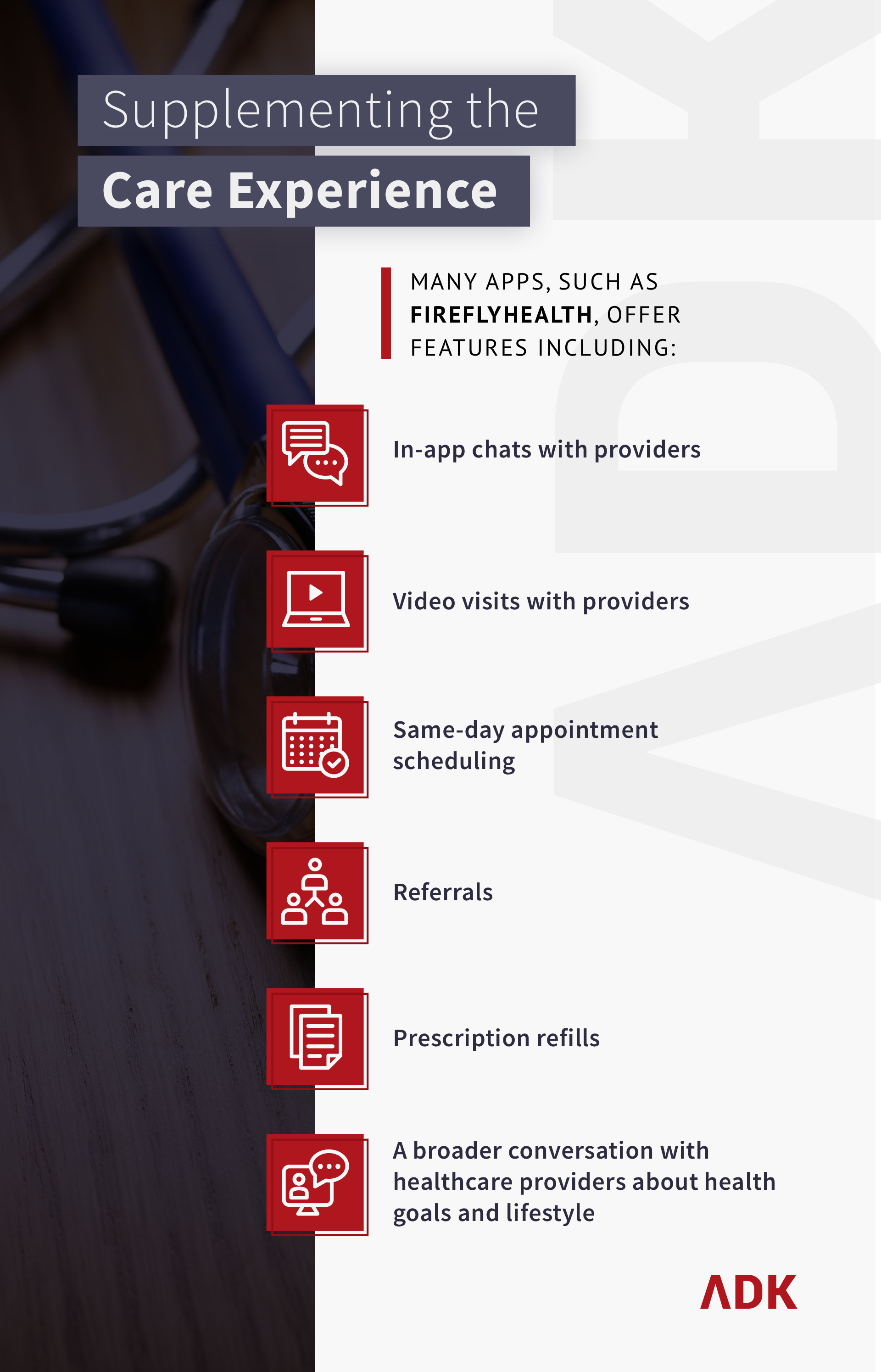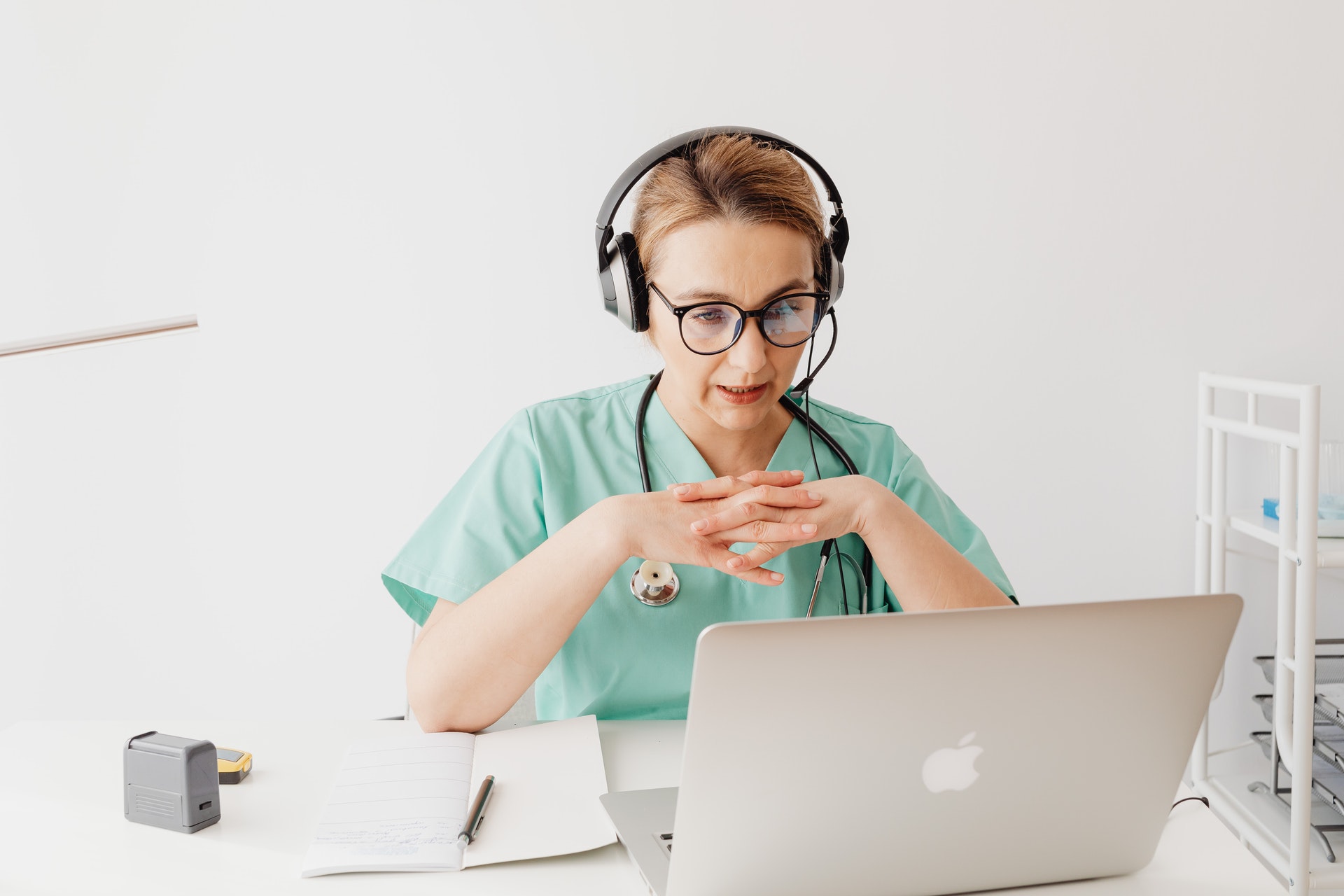When Apple coined the phrase, “There’s an app for that” in 2010, the company couldn’t have been more on the nose – apps now extend into almost every part of our lives, including healthcare and the doctor-patient relationship.
The healthcare industry by its very nature offers a service that is deeply personal to patients and, accordingly, has been based on face-to-face interactions between healthcare professionals and their patients.
However, in the past several years, healthcare apps have taken the traditional version of this personal care and given it a new – digital – face.
Healthcare as We Knew It, and Healthcare as We Know It
We’ve all seen the drug commercials or stock photography images of a smiling, satisfied patient sharing a thoughtful dialogue with their healthcare provider.
It paints a nice picture, but in reality, healthcare demand is high, physicians are busy, and the doctor-patient relationship for some may feel less like that smiling, collaborative scene and more like a factory line as doctors try to see as many patients as they can in a day.
While it may appear that healthcare professionals may be motivated by profit, the reality is quite the opposite. Clinicians choose this high-stress, often emotionally and personally challenging career because of their empathy for others. The healthcare industry is the source of the pressure to squeeze more efficiencies out of limited time.
There is a large amount of administrative work for doctors that is associated with each appointment, like familiarizing themselves with their patients’ files and health records, coupled with conducting health research and remaining abreast of current health information.
While more admin work translates to less time with patients, it also helps healthcare systems maintain or grow profits. An article published in the U.S. National Institutes of Health’s National Library of Medicine explains the difference between a patient-centered culture versus a profit or physician-centered one – the main consequence being the quality of the individual doctor-patient relationship.
But healthcare providers have gotten a big boost from telehealth, also called telemedicine, which enables the electronic distribution of patient health information via telecommunications technologies. In the same way social media apps bring people together across the world, healthcare apps have changed the dynamic of the physician-patient relationship.
The Broad Presence of Telehealth Apps in Healthcare
Telehealth or telemedicine mobile or web apps have many different faces, and patients will encounter them in different forms.
mHealth (Mobile Health) Apps
mHealth apps connect patients to their care via mobile phones or tablets. These apps can be offered by medical organizations, like hospitals and doctors’ offices, or by independent entities.
mHealth apps are capable of tracking a multitude of patient data: monitoring an individual’s blood sugar levels, heart rate, water intake, and more, with the goal of improving the patient’s overall health. This type of information can be invaluable for patients with special health needs that require increased medical attention, such as for diabetes, a heart condition, or before and after surgery.
Brigham and Women’s Hospital mHealth App for Surgical Patients
Brigham and Women’s Hospital in Boston, for example, launched a mobile app and clinician dashboard to help guide patients through their personal Enhanced Recovery After Surgery (ERAS) protocol. This approach gives patients diet and exercise advice, and specialized instruction before and after surgery. These types of provider apps put patients in charge of their health, keep them informed of their doctor’s recommendations, and provide a level of constant monitoring that simply wouldn’t be possible without this technology.
This digital patient empowerment translates to both real health outcomes and aligns with the financial incentives of most healthcare organizations. In one test of the effects of recoup-ERAS, patients who had a high level of engagement with the app had a significantly lower readmission rate than those who rarely engaged with the app. Additionally, hospital costs for the care of engaged users of the app were almost 20 percent lower.
FireFly Health mHealth App
Similarly, many independent entities, like FireflyHealth, provide web and mobile apps backed by qualified physicians that allow patients to direct a personalized healthcare team through the app via messaging, video, or an in-person appointment. FireflyHealth also tracks the patient’s health for ongoing support between visits.
“[FireflyHealth’s] whole model revolves around the idea that if your father was a doctor, you could shoot him a text if you weren’t feeling well,” says Tatar. “Not many people are able to do that. With Firefly, you can send a quick message in the morning to your doctor about what’s going on, and that may lead to a chat, video, or inperson visit or treatment. Technology is just closing the distance between patients and their doctors.”
Entities like Firefly Health originated from a need to help people more easily navigate their healthcare. These apps provide a clear path to what can often become obstacles, such as finding a primary care physician within an insurance plan, and getting the needed medical attention at the right frequency.
Remote Patient Monitoring (RPM)
RPM is a digital method for healthcare providers to keep track of the health of seniors living on their own or in a senior living facility, or patients who may live far away from their providers. A collection of the patient’s health information can be digitally sent to their provider, allowing for monitoring and review.
RPM is important for keeping a closer watch on patients in real-time in ways that were never possible before.
Video Apps
Using live video conferencing, patients are able to speak directly to their doctor no matter where they are. Videos remove the need for patients to make what may be a lengthy drive to an appointment, and it can make healthcare more accessible in more rural areas where there may not be as many options for residents.
Healthcare providers can also use asynchronous video to receive a patient’s health history from another provider. This method is useful in areas, typically more rural, where doctors or specialists are less available.
How Telehealth Apps Help Improve the Doctor-Patient Relationship
Telehealth apps have enabled long-distance patient and clinician contact, inclusive of basic functions like appointment reminders and confirmations, remote check-in, and patient education, and more direct impacts like patient communication, care, and advice.
There are several ways these apps have both supplemented and enhanced the care experience for patients and physicians.
Enhancing Doctor’s Appointments
Before telehealth apps, doctors would have to spend a certain amount of time before or at the appointment reviewing the patient’s file and asking the patient questions about how they’re doing.
Patients who are engaged with their healthcare providers through telehealth apps are able to provide their doctors with important data and health information during the time between appointments. Doctors are then able to go into each appointment fully prepared with current knowledge about the patient and a report summarizing that health information, and appointments can become more meaningful, productive, and fulfilling for the patient.
Enabling Doctors to Focus on the Patient Relationship
Many physicians will attest to feeling burnt out from administrative work, documentation, and the pressure to digest pages of patient health information before each appointment. These challenges take away from the doctor-patient relationship and the level of attention patients need and deserve.
Telehealth apps allow doctors to get a much more direct line of information from each patient, reducing the administrative burden and shifting the conversation to the patient.
Helping Patients Get More Out of Their Healthcare
Typically, patients with specific health needs might visit with their doctor every three months or whenever they need more immediate help.
Dan Tatar, Founder & CEO of ADK Group, says telehealth apps allow for valuable patient communications.
“It puts patients in charge of their health and in closer communication with their care team,” he says. “But, it’s also bidirectional exchange of information. The patient receives education and actionable items from their care team.”
This level of communication becomes especially useful for patients who have mobility issues or live in more rural areas and drive longer distances to see their providers.
Supplementing the Care Experience
Telehealth apps can make the patient feel a little like they have a medical professional in their family. Many of these apps enable patients to send a message at any time to their health care provider to let them know what their health concern is and get advice – perhaps negating the need for a trip to their doctor for an appointment.
These apps were designed to combat the challenges patients face in navigating the healthcare system, which can be difficult and often overwhelming – and even more so when managing specific health needs or a higher level of care, as you’ll see in the following infographic.

Enabling Better Decision Making
The one thing patients want out of their healthcare experience is expert care. And the more information healthcare providers have, the better care they can provide.
Telehealth apps give patients a louder voice to make note of problems they may not otherwise schedule an appointment to discuss, or feel comfortable mentioning during an appointment. In many cases, appointments are scheduled as a result of these communications.
Further, doctors can gather the data patients provide to conduct research and optimize care in the future. Better information equals better decision-making and better care.
Do Telehealth Apps Take Something Away From the Doctor-Patient Relationship?
Some doctors, or patients, may be concerned that shifting some aspects of healthcare to digital apps loses some of the valuable face-to-face time between doctors and their patients; however, its purpose is not to replace any care, but to enhance that care.
Like modern medicine, healthcare is changing and evolving, and there is more value than ever in a patient’s ability to build stronger relationships with their doctors.
“A lot of clinicians have embraced some technology in their treatment of patients,” says Tatar. “Finding those lanes where they can be more impactful and effective with patients is the biggest piece of that.”
Technology like telehealth apps give doctors immediate access to patient medical records, more frequent touches and communications with patients, and the ability to deliver more impactful and effective care.
Privacy Concerns With Telehealth Apps
Today, we use digital apps that manage everything from our banking to our fitness and diet without giving it a second thought.
The extension into healthcare feels natural given how we already use the web, our phones, and tablets, but there are always concerns about privacy that weigh on us no matter what app we’re using.
Tatar notes that while the idea of privacy is different today than it used to be, the healthcare industry is different.
“The healthcare industry has always maintained a high level of privacy, and has instituted very deliberate regulations around patient data that make healthcare apps far less risky to use than many others we use each day.”
As a general rule, patients should always be aware of what information has been collected on them and where they can go to access it.
Telehealth and telemedicine are changing the way doctors deliver care to patients for the better. The more information healthcare providers have, the more effective their diagnoses and treatments can be.
Technology has made its way into most aspects of our lives, and telehealth and telemedicine is one important way it is helping to improve an industry that continues to evolve. These apps enable that evolution while maintaining its critical place in people’s lives.
